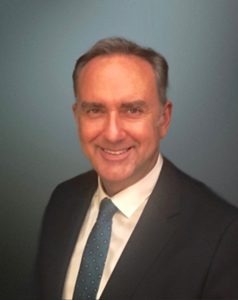Self-complementary and duality in metasurfaces
Metasurfaces (MTS) are thin layers of subwavelength elements which are employed to control the wavefront of guided waves and reflected waves and the transformation from surface wave (SW) to leaky waves (LWs). Particular cases of MTSs are self-complementary metasurfaces (SCMs), single-layer metal patterns floating in free-space whose elemental cell remains invariant after complementary inversion except for a rotation of the elemental cell in the metasurface plane, where “complementary inversion” means interchanging the metal pattern with the free space. The concept of SCM can be also extended to impenetrable type of boundary conditions, modifying the shape of the elements with the objective to maintain the basic properties of reflection/transmission and/or SW degeneration of modes. The application of SCMs to antennas opens new possibilities, especially for antennas in dual-polarization. In this talk, after illustrating the basic principle, various examples will be presented about the use of SCM in microwave frequency range which include gaussian horns, surface-wave based antennas, hyperbolic surfaces, flat reflectors, optical control of the reconfigurability, and propagation which is robust against backscattering.
Biography

Stefano Maci (F04) received the Laurea Degree cum Laude at University of Florence in ‘87 and from ‘97 is a Professor at the University of Siena. Since 2000, he was member the Technical Advisory Board of 13 international conferences and member of the Review Board of 6 International Journals. In 2004-2007 he was WP leader of the Antenna Center of Excellence (ACE, FP6-EU) and in 2007-2010 he was International Coordinator of a 24-institution consortium of a Marie Curie Action (FP6). In 2004 he was the founder of the European School of Antennas (ESoA), a post graduate school that presently comprises 34 courses on Antennas, Propagation, Electromagnetic Theory, and Computational Electromagnetics and 150 teachers coming from 15 countries. Since 2004 is the Director of ESoA. Since 2010 he has been Principal Investigator of 6 cooperative projects financed by European Space Agency.
Professor Maci has been a former member of the AdCom of IEEE Antennas and Propagation Society (AP-S), associate editor of AP-Transaction, Chair of the Award Committee of IEEE AP-S, and member of the Board of Directors of the European Association on Antennas and Propagation (EurAAP). From 2008 to 2015 he has been Director of the PhD program in Information Engineering and Mathematics of University of Siena, and from 2013 to 2015 he was member of the first National Italian Committee for Qualification to Professor. He has been former member of the Antennas and Propagation Executive Board of the Institution of Engineering and Technology (IET, UK). He founded and has been former Director of the consortium FORESEEN, involving 48 European Institutions. He was the principal investigator of the Future Emerging Technology project “Nanoarchitectronics” of the 8th EU Framework program, and he is presently principal investigator of the EU program “Metamask”. He was co-founder of 2 Spin-off Companies. He has been a Distinguished Lecturer of the IEEE Antennas and Propagation Society (AP-S), and EuRAAP distinguished lecturer in the ambassador program. He was recipient of the EurAAP Award in 2014, of the IEEE Schelkunoff Transaction Prize in 2016, of the Chen-To Tai Distinguished Educator award in 2016, and of the URSI Dellinger Gold Medal in 2020. He has been TPC Chair of the METAMATERIAL 2020 conference and Chairperson of EuCAP 2023. In the last ten years he has been invited 25 times as key-note speaker in international conferences. He is President of the IEEE Antennas and Propagation Society 2023.
The research interest of Prof Maci includes high-frequency and beam representation methods, computational electromagnetics, large phased arrays, planar antennas, reflector antennas and feeds, metamaterials and metasurfaces. His research activity is documented in 200 papers published in international journals, (among which 100 on IEEE journals), 10 book chapters, and about 450 papers in proceedings of international conferences. The papers he coauthored have been cited about 10,000 times (h index 50, source: Google Scholar).
